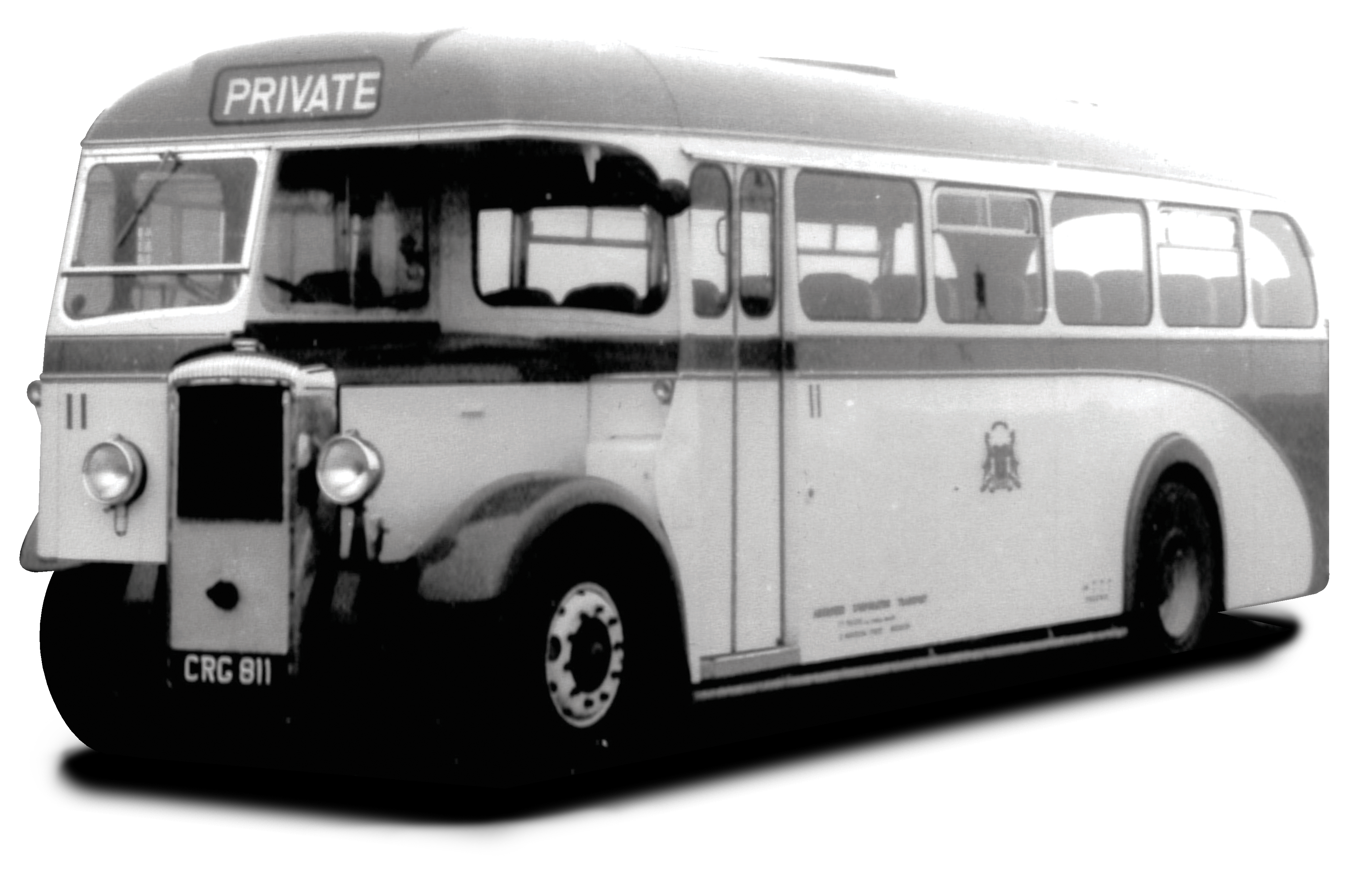The History
The chassis for a batch of 10 single deck buses were ordered during the Second World War when the Daimler company was taking orders for production after hostilities ceased. In the event only 7 were delivered, ACT 11 being received in July 1947. The completed vehicles had B34R bodywork built locally in Kittybrewster by William Walker, Ashgrove Coachworks. These buses were originally used on lighter loaded services and on the many contract and private hire runs within the city.
As an economy measure, the Corporation had sold off its fleet of 10 Crossley touring coaches in 1956 and, in part substitution, these then relatively young Daimler single deckers were used. In preparation, all had been rebuilt in King Street workshops in 1956 with a front door in place of the rear entrance. However, as a further improvement, two of the batch, 9 and 11, were rebodied by Alexander of Falkirk in 1958 to B35F bodywork layout with aluminium body framework, remaining 7’6” wide. Number 11 was renumbered 41 in 1967 to make way for new driver only single decker’s (see ACT 10 and ACT 14 (AEC)) and was further modified to be used for driver only operation. The bus was used occasionally for driver only service on peak time duplicates in addition to private hire and contract work until withdrawn from service in 1972.
After its sale, 11/41 saw further passenger service with A&C McLennan of Spittalfield, Perthshire, who, in turn, sold it to preservationists in Lancashire in 1975. The bus was kindly donated to the Trust by the Ribble Vehicle Preservation Trust.

